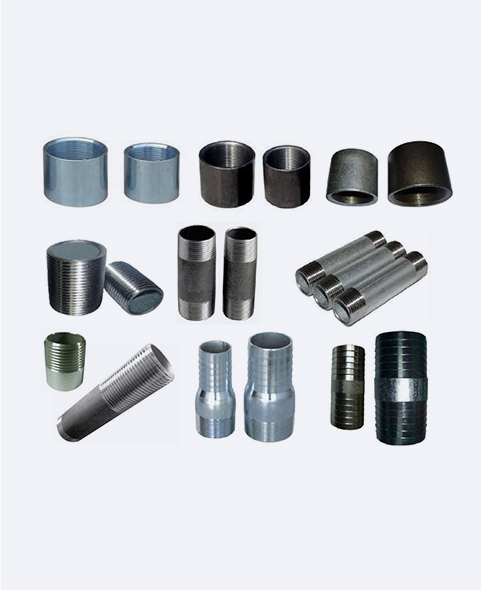-
Cangzhou Yulong Steel Co., Ltd.
-
Phone:
+86 13303177267 -
Email:
admin@ylsteelfittings.com
- English
- Arabic
- Italian
- Spanish
- Portuguese
- German
- kazakh
- Persian
- Greek
- French
- Russian
- Polish
- Thai
- Indonesian
- Vietnamese
- Zulu
- Korean
- Uzbek
- Hindi
- Serbian
- Malay
- Ukrainian
- Gujarati
- Haitian Creole
- hausa
- hawaiian
- Hebrew
- Miao
- Hungarian
- Icelandic
- igbo
- irish
- Japanese
- Javanese
- Kannada
- Khmer
- Rwandese
- Afrikaans
- Albanian
- Amharic
- Armenian
- Azerbaijani
- Basque
- Belarusian
- Bengali
- Bosnian
- Bulgarian
- Catalan
- Cebuano
- China
- China (Taiwan)
- Corsican
- Croatian
- Czech
- Danish
- Esperanto
- Estonian
- Finnish
- Frisian
- Galician
- Georgian
- Kurdish
- Kyrgyz
- Lao
- Latin
- Latvian
- Lithuanian
- Luxembourgish
- Macedonian
- Malgashi
- Malayalam
- Maltese
- Maori
- Marathi
- Mongolian
- Myanmar
- Nepali
- Norwegian
- Norwegian
- Occitan
- Pashto
- Dutch
- Punjabi
- Romanian
- Samoan
- Scottish Gaelic
- Sesotho
- Shona
- Sindhi
- Sinhala
- Slovak
- Slovenian
- Somali
- Sundanese
- Swahili
- Swedish
- Tagalog
- Tajik
- Tamil
- Tatar
- Telugu
- Turkish
- Turkmen
- Urdu
- Uighur
- Welsh
- Bantu
- Yiddish
- Yoruba

Nov . 12, 2024 12:06 Back to list
carbon steel concentric reducer
Understanding Carbon Steel Concentric Reducers
In the realm of piping systems, the functionality and integrity of components are paramount. Among these components, the concentric reducer plays a crucial role, especially when constructed from carbon steel. This article delves into the significance, applications, and advantages of carbon steel concentric reducers, as well as their characteristics.
What is a Concentric Reducer?
A concentric reducer is a type of pipe fitting that allows for a seamless transition between two different diameters of pipes. It features a symmetrical design where the center line remains constant, ensuring that the flow of fluid is efficient and smooth. This attribute is particularly important in preventing turbulence, which can lead to pressure drops and increased energy costs in fluid transport systems.
The Role of Carbon Steel
Carbon steel is a widely used material for manufacturing concentric reducers due to its excellent strength, durability, and cost-effectiveness. Carbon steel is an alloy made primarily of iron and carbon, and its properties can be tailored by adjusting the carbon content. Common grades used in piping applications include ASTM A234 WPB and ASTM A403 WP316. These materials provide high tensile strength and good corrosion resistance, making them suitable for various industrial applications.
Applications of Carbon Steel Concentric Reducers
Carbon steel concentric reducers are predominantly used in a range of industries, including
1. Oil and Gas In the extraction and transportation of oil and gas, concentric reducers play a vital role in connecting pipes of different sizes while maintaining pressure stability.
2. Chemical Processing The chemical industry often requires a variety of pipe sizes for the transport of corrosive and non-corrosive fluids. Carbon steel reducers are effective in maintaining integrity under high pressure and temperature conditions.
carbon steel concentric reducer

4. Power Generation In power plants, particularly those utilizing steam, carbon steel concentric reducers help manage fluid flow from one stage of the process to another.
Advantages of Using Carbon Steel Concentric Reducers
1. Strength and Durability The inherent strength of carbon steel makes these reducers capable of withstanding high pressure and mechanical stress, contributing to a longer service life.
2. Cost-Effectiveness Compared to other materials such as stainless steel or brass, carbon steel provides a budget-friendly alternative while still delivering robust performance.
3. Versatility These reducers can be fabricated in various sizes and configurations, allowing them to be customized for specific applications.
4. Ease of Installation With their simple design and standard dimensions, carbon steel concentric reducers are relatively easy to install, thus reducing labor costs and installation time.
5. Improved Flow Characteristics Their design helps minimize pressure losses and promotes an uninterrupted flow, which is critical for maintaining system efficiency.
Conclusion
In summary, carbon steel concentric reducers are essential components in many industrial piping systems. Their ability to facilitate a smooth transition between different pipe sizes, combined with the benefits of strength, versatility, and cost-effectiveness, make them a preferred choice for engineers and designers. As industries continue to evolve and demand more efficient fluid transport solutions, the significance of carbon steel concentric reducers will only grow, underpinning their invaluable role in modern engineering applications.
Latest news
-
ANSI 150P SS304 SO FLANGE
NewsFeb.14,2025
-
ASTM A333GR6 STEEL PIPE
NewsJan.20,2025
-
ANSI B16.5 WELDING NECK FLANGE
NewsJan.15,2026
-
ANSI B16.5 SLIP-ON FLANGE
NewsApr.19,2024
-
SABS 1123 FLANGE
NewsJan.15,2025
-
DIN86044 PLATE FLANGE
NewsApr.19,2024
-
DIN2527 BLIND FLANGE
NewsApr.12,2024
-
JIS B2311 Butt-Welding Fittings LR/SR 45°/90° /180°Seamless/Weld
NewsApr.23,2024











